After a severe pandemic-induced drought, getting your cultural fix feels all the more special these days.
Flinging its doors open to the public once more is the iconic Queen’s Gallery at Holyrood, Edinburgh, where an extraordinary exhibition is set to begin tomorrow (Friday, 25 March). Boasting 33 of the finest paintings from the Royal Collection, the gallery will be showing ‘Masterpieces from Buckingham Palace’. It is an absolute feast for the eyes.
The exhibition, which will continue until 25 September 2022, brings together spectacular works by artists including Sir Peter Paul Rubens, Claude Lorrain, Artemisia Gentileschi and Sir Anthony van Dyck. That’s before we even mention the four mesmerising paintings by Rembrandt Van Rijn – one of which is a portrait of one Agatha Bas (‘Lady with a Fan’) whose watchful eyes follow as you float around the room. This is the largest group of works by the Dutch artist currently on public display in Scotland.
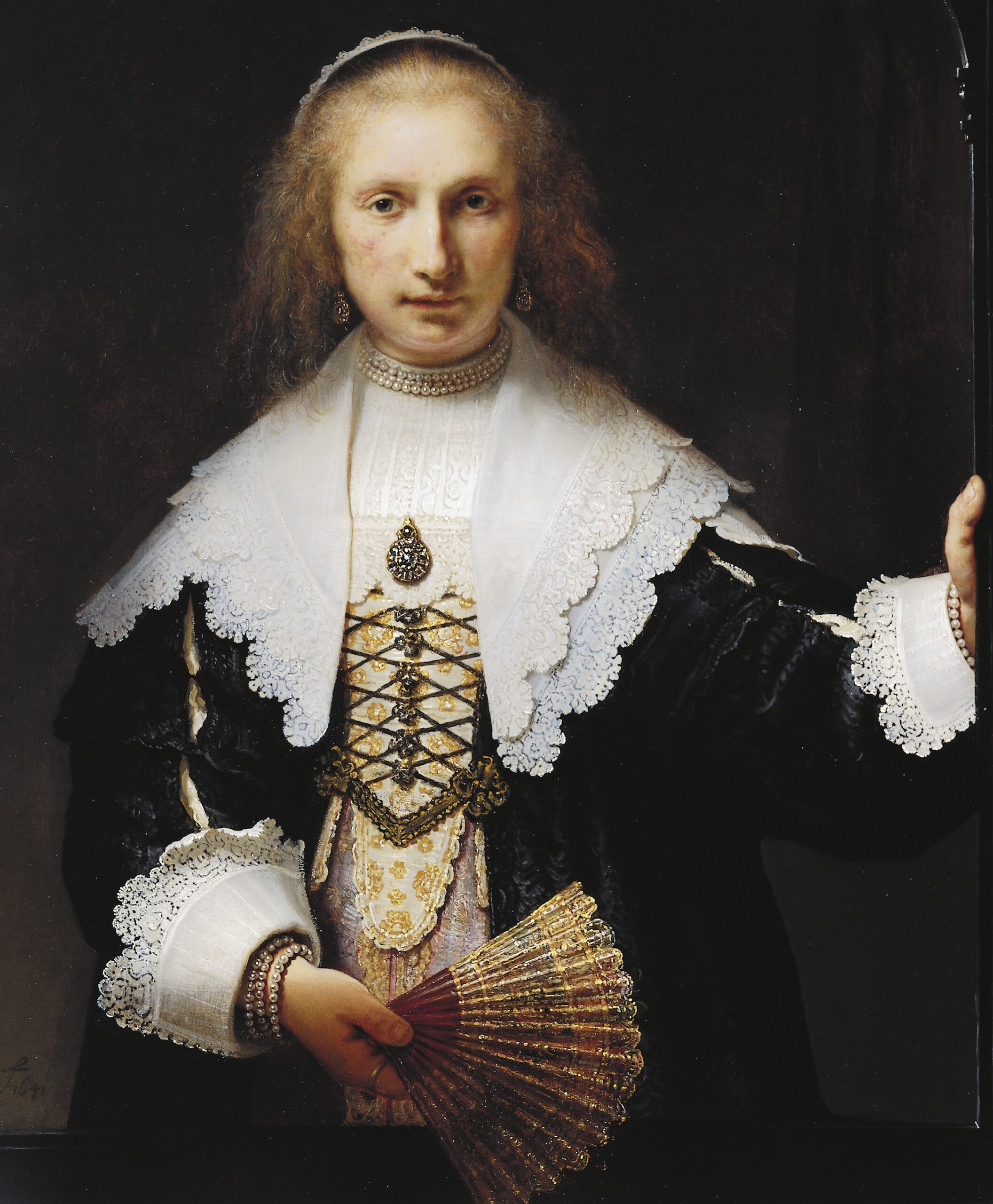
Rembrandt can Rijn, Portrait of Agatha Bas (‘Lady with a Fan’), 1641 [Credit: Royal Collection Trust © Her Majesty Queen Elizabeth II 2022]
Since George III and Queen Charlotte acquired Buckingham Palace back in 1762, Old Master paintings from the Royal Collection have been kept there. The ‘Masterpieces from Buckingham Palace’ exhibition is a unique opportunity not only to view these world-renowned paintings that are usually housed in the residence’s State Rooms, but also to experience them in a modern gallery setting. The more intimate display at The Queen’s Gallery gives audiences the chance to encounter each painting close up and at eye level.
The paintings are arranged by school, beginning with a group of pictures created in Italy between 1530 and 1660. Several Italian works feature idealised female figures, including Guido Reni’s Cleopatra with the Asp, 1628, whose sickly, pallid complexion is almost difficult to look at. Also showcased is Parmigianino’s Pallas Athene, 1535, whose finely spun hair is as bright as the gold of her breastplate. It is, however, Judith with the Head of Holofernes by Cristofano Allori, 1613, that particularly caught my eye. Judith’s faultless complexion contrasts with the grotesquery of her victim’s severed head. The figures in the painting are said to be autobiographical, based on an unhappy affair between the artist, presented as Holofernes, and Maria de Giovanna Mazzafirri, in the guise of Judith. Hell hath no fury, as they say…
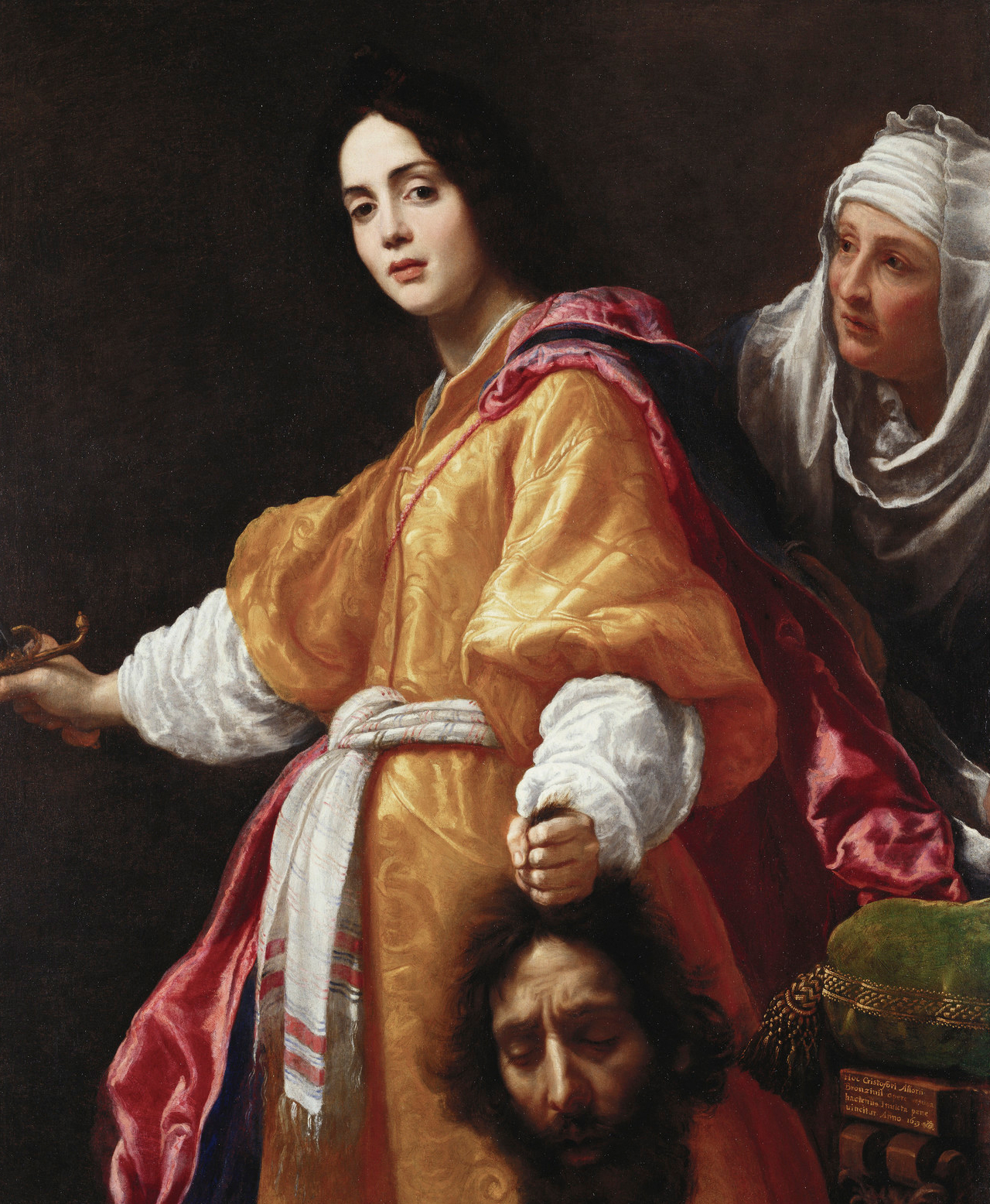
Cristofano Allori, Judith with the Head of Holofernes, 1613 [Credit: Royal Collection Trust Her Majesty Queen Elizabeth II 2022]
Further round the exhibition, two Italian paintings reveal aspects of the artistic process. Andrea del Sarto’s unfinished work Portrait of a Woman in Yellow, 1529-30, with its visible underdrawing and exposed underlayers, offers a portal into the Renaissance studio, as though we are watching over del Sarto’s shoulder as he paints. In Self-Portrait as the Allegory of Painting (‘La Pittura’), c.1638-9, Artemisia Gentileschi places emphasis on the physicality of painting, depicting herself wearing a dirtied apron, brush in hand, leaning on a stone slab used for grinding pigments.
The exhibition also contains a number of works created in the Low Countries between 1630 and 1680, the heyday of the so-called Dutch Golden Age. Scenes of everyday life, such as the leisurely card game depicted in Pieter de Hooch’s Cardplayers in a Sunlit Room, 1658, are imbued with an arresting realism through the artists’ command of perspective, colour and detail. Compositional devices such as the false arches in Rembrandt’s Agatha Bas, 1641, Gerrit Dou’s The Grocer’s Shop, 1672, and Jan Steen’s A Woman at her Toilet, 1663, project people and objects into the viewer’s space, heightening the illusion of three-dimensionality.
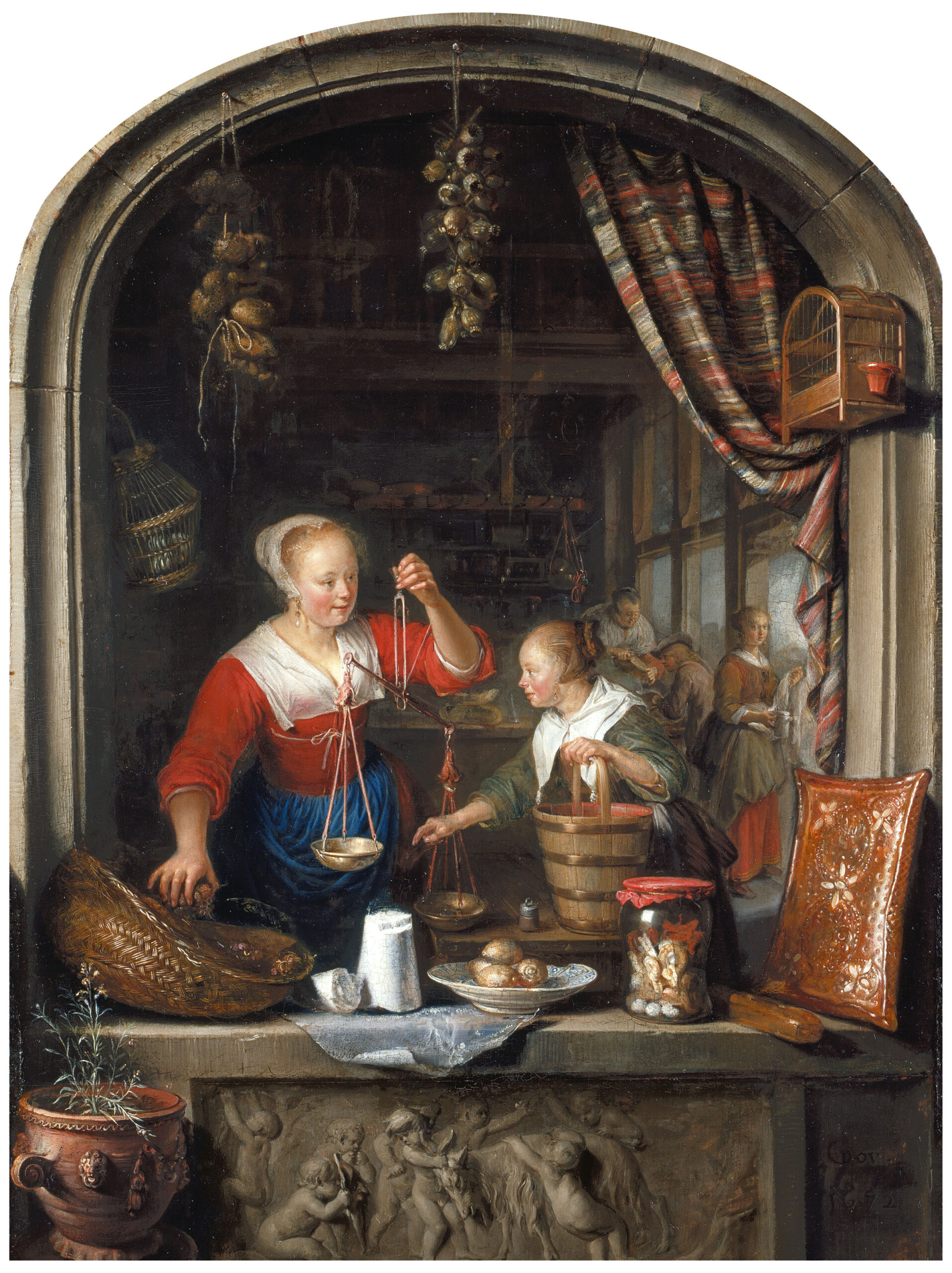
Gerrit Dou, The Grocer’s Shop, 1672 [Credit: Royal Collection Trust © Her Majesty Queen Elizabeth II 2022]
Without wanting to ruin all of the surprises, the exhibition concludes with a series of evocative landscape paintings including Gaspard Dughet’s Seascape with Jonah and the Whale, 1653-4, with its ominous skies and crashing waves.
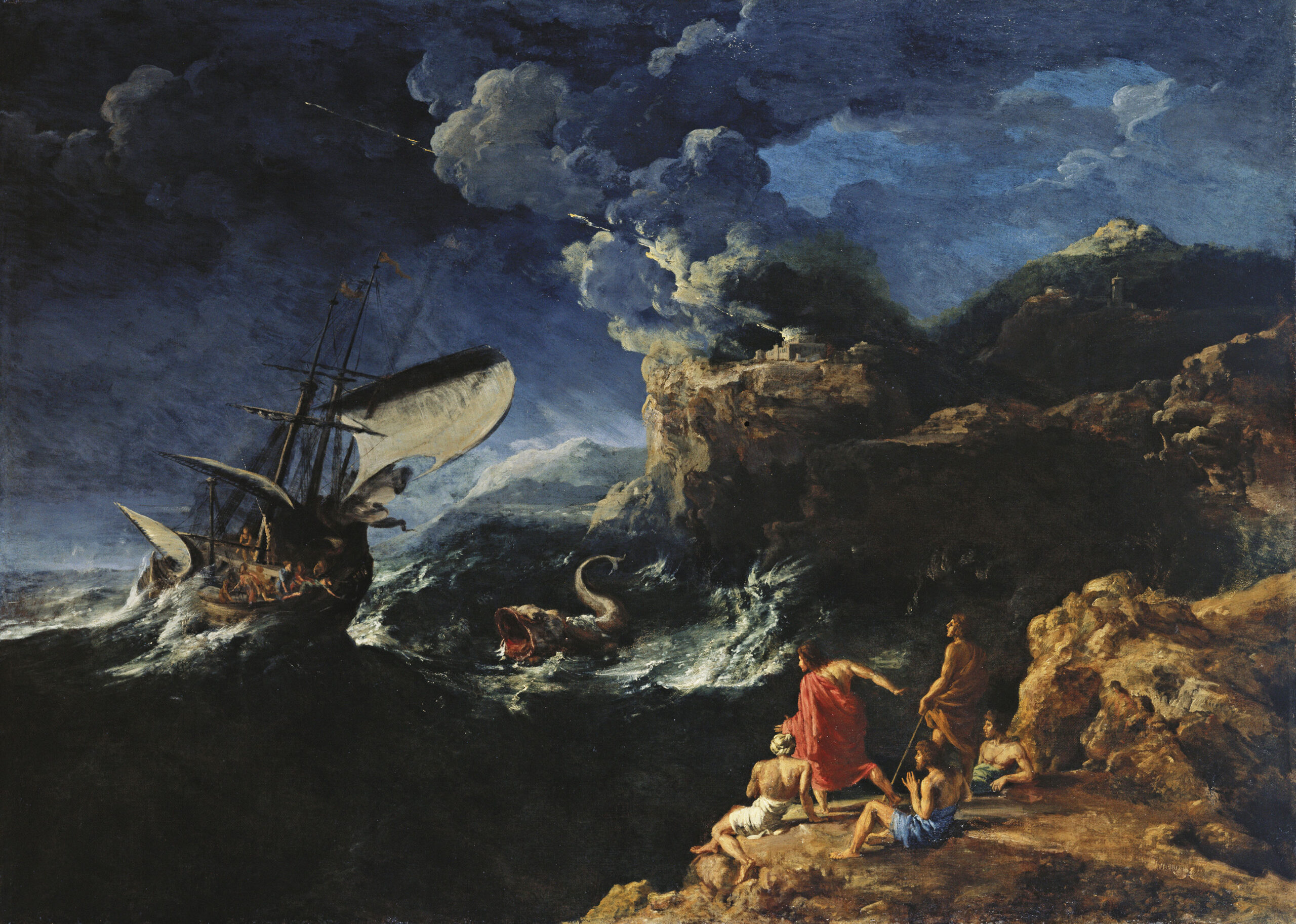
Gaspard Dughet, Seascape with Jonah and the Whale, c.1654 [Credit: Royal Collection Trust © Her Majesty Queen Elizabeth II 2022]
More than two thirds of the paintings in the exhibition were acquired by George IV, one of history’s most extravagant monarchs and a prolific collector of art. The year 2022 will mark the bicentenary of George IV’s visit to the Palace of Holyroodhouse in 1822. This was the first visit of a reigning monarch to Scotland for nearly two centuries and involved elaborate pageants organised by Sir Walter Scott. A series of events and activities will take place at the Palace in August to bring this extraordinary event to life for visitors.
An in-conversation between the exhibition curator and a paintings conservator, ‘Masterpieces Over Time’, will be streamed live from The Queen’s Gallery at 7pm on Tuesday, 29 March. Weekly short talks, ‘Monday Masterpieces’ will take place in the Gallery every Monday at 11am.
Tickets cost £8.50 for adults, £5.50 for those aged 18-24, £4.50 for disabled and for children aged 5-17, and under-5s go free.
To find out more about the exhibition, please visit their website.
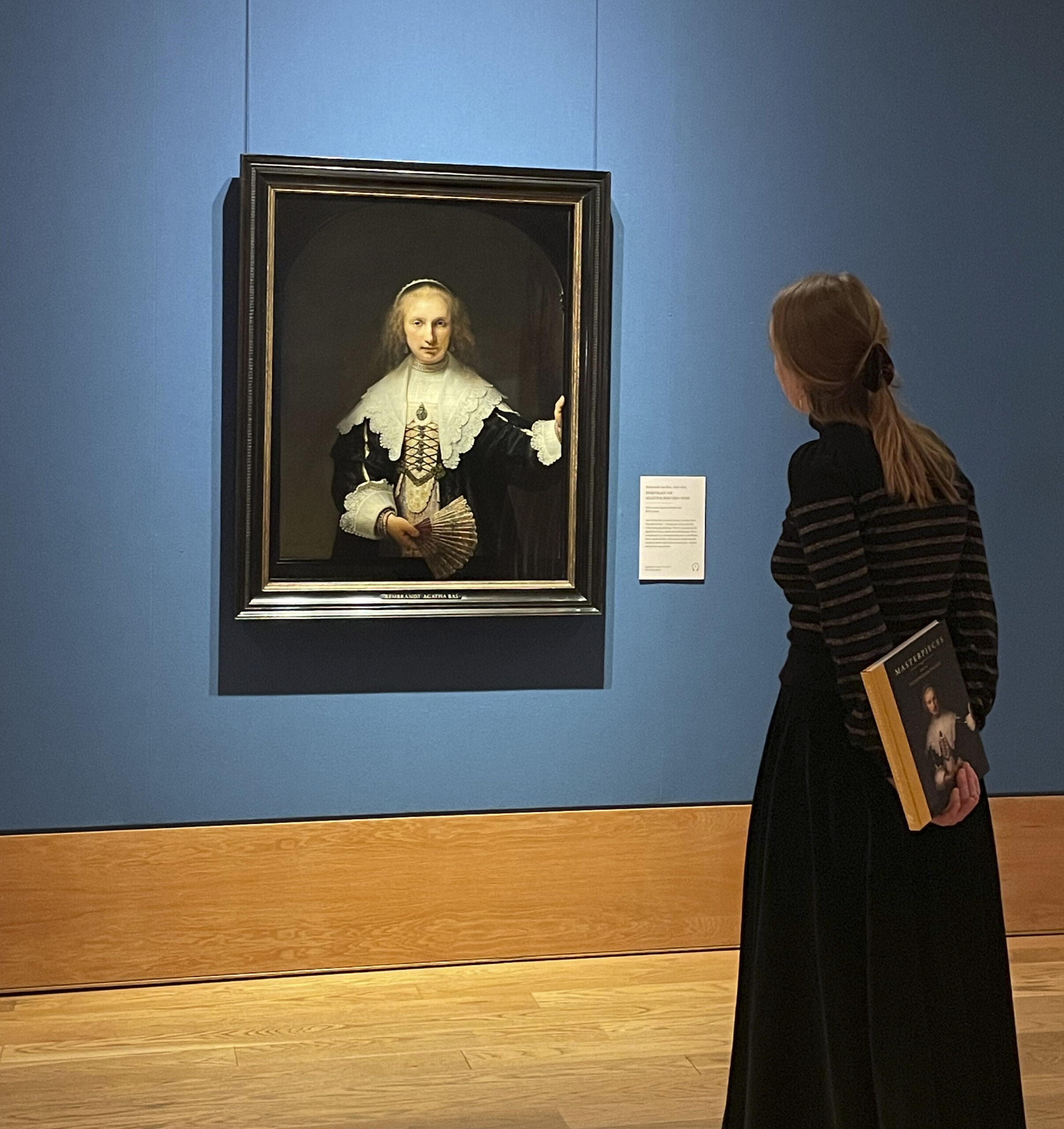
Isabella Manning, exhibition curator, at Rembrandt’s Agatha Bas [Rosie Morton]
TAGS

